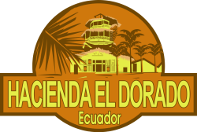Basic necessity supply in the mission of Padre Othmar Stäheli
(when we were there 1979-1981)
Accommodation and facilities
The traditional bamboo house was built on stilts, divided into a living and a sleeping area. Below the house, there was room for animals and to dry palm leaves which were cut, cooked and tanned to make Panama hats.
The furnishings consisted of a hammock, a small table and a wooden stool. A wooden crate coated with sand was used as a stove for cooking on an open fire. A chimney? Why? The smoke would draft through cracks or windows.
Power connections were very expensive and practically unaffordable for the villagers (at the mission, we had emergency generators to cover the daily outages).
Back then, there were no telephones. To call someone in Europe, we had to travel at least 70 over bumpy roads to the next city and keep the time difference of six hours in mind. With a bit of luck, a connection could be established.
The “House construction” Program
- Padre Othmar instructed the locals making bricks from sand and concrete and building houses
- Often, the people only owned 1 bed frame without mattresses for the whole family
- Bed Program: Men learned to build beds and women learned to sew mattress covers
- For bigger purchases, repayment programs were established
Nutrition
The basic foods were rice, fish and cooked bananas. Milk was rare and often diluted. Cows had to look for their feed themselves (unfortunately, nightly accidents involving cows, mules or horses were common). Due to the lack of water, fruits and vegetables and too expensive to buy. Malnutrition and vitamin insufficiency were consequences of decades of draught.
- Pregnant women and children up to three years were taken into a food program from which they received food supplies. This was established because the first three years are the most important to ensure a healthy brain development.
- Village gardens, wells and cisterns were built and water pumps were provided. Often, this was a race against time to harvest before the well would dry up again.
Hygiene
Water was a rare commodity and transported into the region through tankers. One could buy water in buckets (often it was not clean). It had to be used sparingly, even for personal hygiene (you had to shower with one cup of water).
- Water pipes were built through compulsory labour
- Spitting on the ground and tuberculosis were common
- Education programs were established together with medical care and food programs
- It was common to throw everything out of the windows: waste, food scraps, black/grey water and even the chamber pots
- Toilets or pit latrines were not commonly used. Even one latrine in the whole village was considered pure luxury.
Animals could roam the village freely in search for food. Aside from food scraps, they also consumed most of the waste…
Medical Care
For medical care in a hospital, you needed to buy the necessary supplies (bandages, needles, thread, medication, etc..) in nearby pharmacies yourself.
- Basic medical care was quickly offered at the Missionary station
- Young girls were taught to provide help in their villages
Education
Education standards were miserable and as a consequence of malnutrition, local “teachers” in the remote villages were not educated. Illiteracy was rampant.
Geographical knowledge often did not extend farther than the next villages or at most the next city. Often, we were asked whether we had travelled by mule or bicycle from our country.
Since the roads were bad and the teachers were not paid regularly, they did not have much motivation to visit the villages to teach there.
Jail
To go to jail – whether innocent or guilty – has always been a very hard sentence. Human rights or dignity were unheard of. Without the help of relatives bringing in food, you were basically sentenced to death by starvation.



